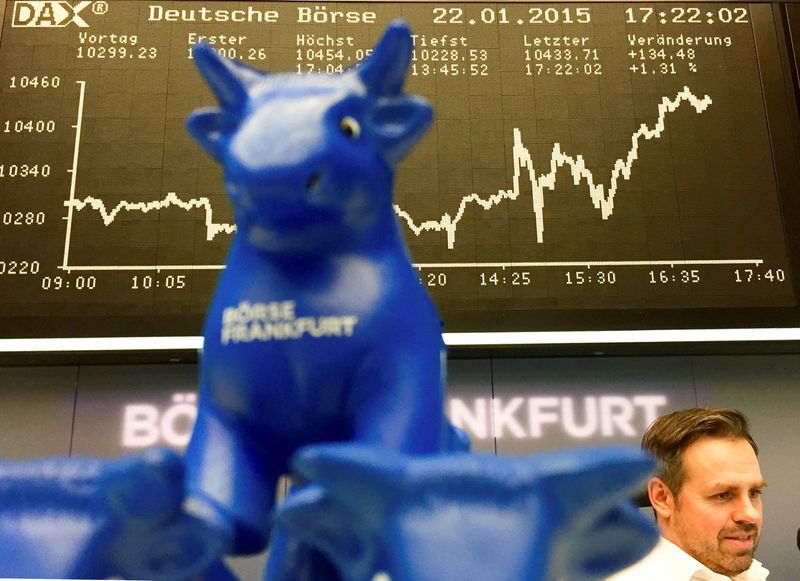This post was originally published on this site

Investing.com – European stock markets are expected to open in a mixed fashion Tuesday with the dollar strengthening, helped by gains in Asia as Chinese factory activity impressed but with ceasefire talks failing to stop the fighting in Ukraine.
At 2:05 AM ET (0705 GMT), the DAX futures contract in Germany traded 0.8% higher, while CAC 40 futures in France dropped 0.5% and the FTSE 100 futures contract in the U.K. fell 0.4%.
European equity markets weakened on Monday as the West ramped up the sanctions on Russia in response to its continued invasion of Ukraine, cutting off some of its banks from the SWIFT financial network and limiting Moscow’s ability to deploy its $630 billion foreign reserves.
Hopes that talks last night between Russian and Ukrainian officials near the Belarusian border could result in a ceasefire have been dashed as they ended with no agreement, while Russian troops continue to heavily shell the Ukrainian capital Kyiv amid fierce resistance.
That said, Europe has received a largely positive handover from Asia, with investors regaining some composure, helped by Chinese factory surveys, both official and private sector, showing the second-largest economy in the world continues to expand despite cost pressures.
In the foreign exchange markets, the dollar edged higher, with the safe haven yen and Swiss franc pulling back after their biggest rallies in almost seven weeks, while the ruble tried to regain some stability after its crash to an all-time low.
At 2:05 AM ET, the US Dollar Index, which tracks the greenback against a basket of six other currencies, traded 0.1% higher at 96.740.
The corporate sector sees earnings from the likes of Bayer (OTC:BAYRY), Covestro (DE:1COV), HelloFresh (DE:HFGG) and Zalando (DE:ZALG) Tuesday, but the focus is likely to remain on the companies which have substantial links with the Russian market.
Looking at economic data, the main focus will be on the final Eurozone PMI manufacturing activity data for February for signs of strength in this vital sector.
Oil prices headed higher as the fears of a disruption of supply from Russia, the world’s second-largest crude producer, outweighed the potential for a coordinated global release of crude from strategic reserves.
Major oil and gas companies, including BP (NYSE:BP) and Shell (LON:RDSa), have announced plans to exit Russian operations and joint ventures, while the Western sanctions are making it harder for Russian oil to be purchased by consumers.
Still, oil remains marginally below $100 a barrel following talk that the United States and a number of major consuming nations could get together to release crude stocks to try and mitigate supply disruption.
By 2:05 AM ET, U.S. crude futures traded 1.8% higher at $97.42 a barrel, having gained more than 4% the previous session, while the Brent contract rose 2.1% to $99.98, below last week’s seven-year high of $105.79.
Additionally, gold futures rose 0.5% to $1,909.20.


